Amid the news of theatre closures, mid-season pauses, financial campaigns to save robust regional theatres, and the Supreme Court’s revocation of affirmative action, the Latinx Theatre Commons (LTC) Designer and Director Colaboratorio held this summer felt like a stolen weekend, a protected space away from the realities of the world. Before graduate school, I had a decade-long career in finance and strategic planning, in which I attended corporate weekend retreats that pulled together top executives to create an action plan to solve the company’s problems. Colaboratorio did the opposite; it pulled together theatremakers from across the country at various levels of experience to disrupt their own artistic practice from the hegemonic systems that inform it to re-envision what it means to create, collaborate, and play. Instead of trying to fix the broken system, Colaboratorio invited its participants to strategize about process through meeting and working with new people.
Play as Process at the Latinx Theatre Commons Designer and Director Colaboratorio
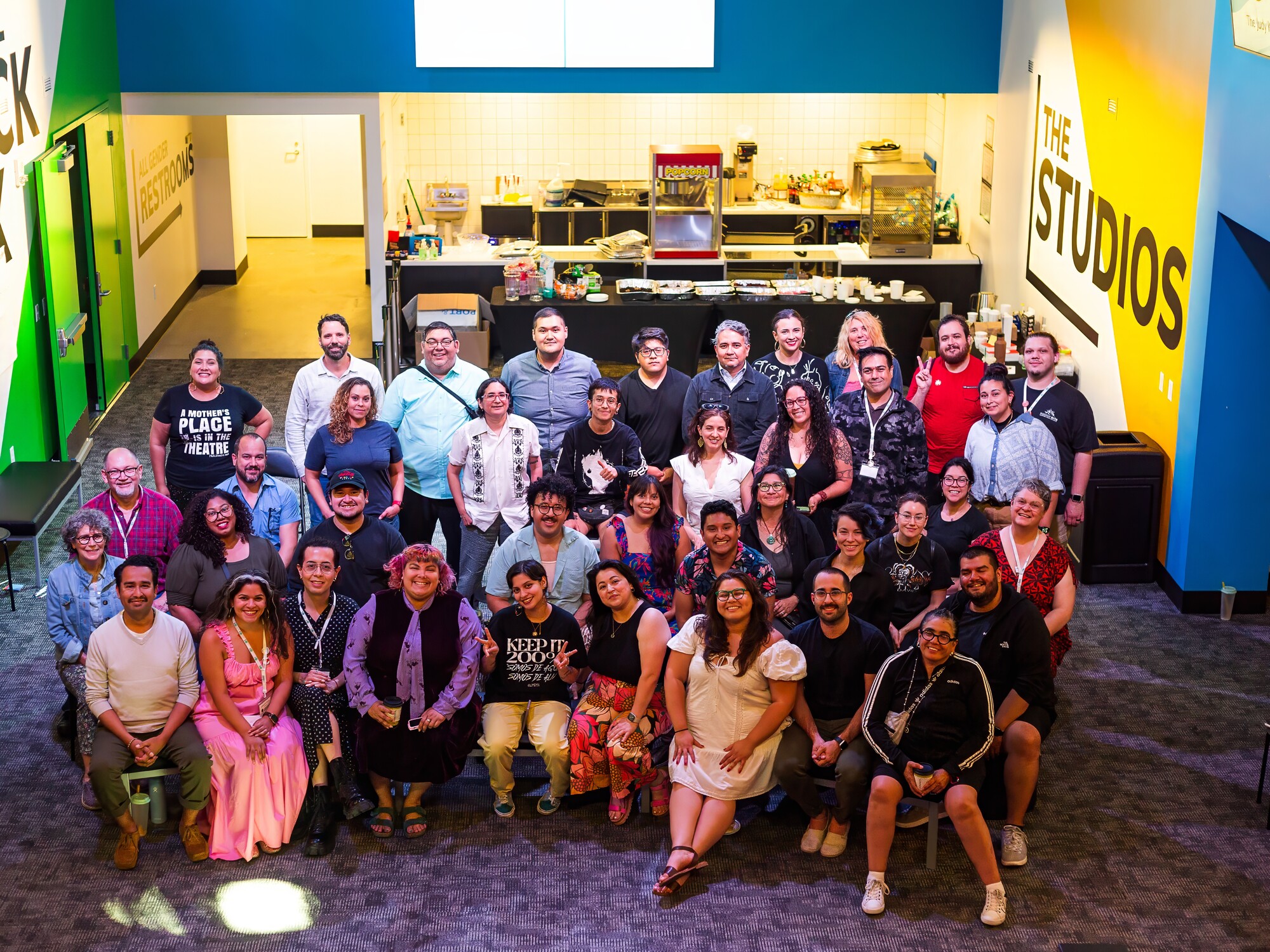
The LTC Designer and Director Colaboratorio was conceived of before the COVID-19 pandemic, but it was placed on hold and redesigned over the past few years. The first LTC event to focus on process rather than the production of plays or performance, Colaboratorio created six teams, each with a sound designer, lighting designer, scenic designer, costume designer, director, and scholar/documentarian. I was the head scholar/documentarian and, along with resident dramaturg Karin Magaldi, rotated through the six groups as they worked together over the weekend. Participants were selected for the event in early spring, and it took place in Portland from 28 June to 2 July 2023. To prevent the working groups from expending their time on pre-meetings, the groups were announced on 24 May.
All groups were given the same play to design and plan: Evelina Fernández’s Sleep with the Angels. Each group was assigned a designated theatre space, prompting various challenges and possibilities that were dependent on the physical attributes of the type of theatre for their imagined production. Again, to limit the possibility of people working ahead of Colaboratorio, the play was only announced and distributed on 23 June. Colaboratorio kicked off on Wednesday 28 June with a reading of the play, and the theatre spaces were assigned on 29 June, the first day of working sessions. Thursday, Friday, and Saturday involved blocks of time for groups to work, activities for Colaboratorio participants as a full group, select hours for affinity groups, and optional evening activities. On Sunday 2 July, the groups presented their work before the entire Colaboratorio group and local Latinx artists.
Each exercise throughout the weekend resulted in learnings and reminders about not only how we work, but what we gain by working together.
Building Teams
On Thursday morning, we met in the basement black box theatre at Portland State University. The teams were each given a bag of LEGOs without instructions or a photograph of what the sets were supposed to form. Each team approached their work differently. Some began by constructing a story and then assembled their pieces to tell their narrative, while other groups assessed their resources before creating a story from the material objects they had before them. Some groups made each decision together, while others worked on portions individually and came together at the end. We formed another roundtable again, and each team shared the way they worked. I commented that I was more interested in what they built after I heard the stories behind it, that the act of sharing our stories generates interest. Laura Moreno astutely pointed out that this is a strategy for the cultivation of audiences; our ways of creating stories and theatre spaces generate interest in the theatre produced. Each exercise throughout the weekend resulted in learnings and reminders about not only how we work, but what we gain by working together.
As each group came together, I was struck by the variety of practices and rules for communication. Several groups established community agreements; some had check-ins and closing share-outs; and one made the deliberate gesture of sharing collaborative processes in part through not acknowledging their titles (and years of experience) throughout their time together. Rulas A. Muñoz had severe transportation delays and did not arrive until late Saturday evening; an immediate and genuine solidarity developed within their group with members holding individual FaceTime conversations with Rulas and bringing them into the full group meetings via Zoom.

Participants engage in the LEGO activity at the LTC Designer and Director Colaboratorio. Photo by Roy Arauz.
To have a weekend with allocated space and time to play freely for the purpose of disassociating from white-centered ontologies requires a suspension of disbelief, though a wealth of realities revealed themselves skimming just under the surface. For example, although people talk about the COVID-19 pandemic in the past tense, COVID testing was required. A small stack of COVID tests were placed on the table next to name badges, and each person was required to test and email the organizers a photograph of their results each morning before entering the building. Buttons for “fist bumping ok” and “hugs ok” were also options, an acknowledgement of both COVID precautions and a larger effort to respect others’ boundaries.
The economic catastrophes of the past few years marked the local geography. The surrounding area of Portland has experienced an uptick in homelessness, and Sarah Jane Hardy, artistic director of Northwest Children’s Theatre and host of our final day of presentations, reminded us that the theatre was just starting to produce again after three years. Some of the enduring questions that often arise in conversations amongst Latinx theatremakers arose again, including the discussion of what it means to organize around Latine/x/o identity and the requisite conversation about which term to use to describe ourselves. The problematic homogenization of the term “Latinidad” was parsed anew, as was the conversation about who gets to portray whom onstage and participate in the theatre-making process offstage within the broad scope of Latinx identities (e.g. Cubans portraying Puerto Ricans, a Mexican director asked to direct a play about Argentina, etc.).
What happens when artists curate spaces for artists?
Creating Space
My role of moving between the groups illuminated the importance of spaces in the collaboration process. During Colaboratorio, multiple spaces functioned simultaneously to create the opportunity to reimagine the design process.
The first space was the physical location of each of the groups. Each group was assigned a space within the Portland State University building, and everyone requested a tour of the building to get a sense of the larger space and to see where their colleagues would be working. One group had a top floor room with ample space, where the sounds of a brass instrument summer camp bellowed intermittently throughout their meetings. Another was given the costume shop, so their discussion ensued with fabrics, sewing machines, and a range of colors as their surroundings. Another had a dance room with no chairs; shoes had to be removed before entering the space. They used the yoga and stretch mats and moved around the bright space with its floor-to-ceiling windows and ballet barre. Another was in the black box theatre in the basement, which was also the site of our large group meetings. Noel Nichols, whose group was situated in the music classroom, used the white board with a blank musical notation on it to visually convey their design for sound. And another group was in a design room with high-top worktables. Each of these physical spaces shaped group communication. These are the spaces of design: theatremakers often talk about rehearsal spaces but not the spaces of the design team, and during the Colaboratorio, these spaces were in the limelight.
The second space that shaped their convening was the physical theatre space that each group designed with in mind, including the Portland Center Stage mainstage, Oregon Shakespeare Festival’s Angus Bowmer stage, Alabama Shakespeare Festival’s outdoor Elizabethan stage, and more. Models were made for each group, so information about the space was available in the hand-held material mock-up and through information found online as well as, in some cases, personal experience with the space. Although each group designed into their space, only one group mentioned the theatre space they were assigned during the final presentations, signaling that the emphasis on process is not heavily weighted by the physical theatre space.
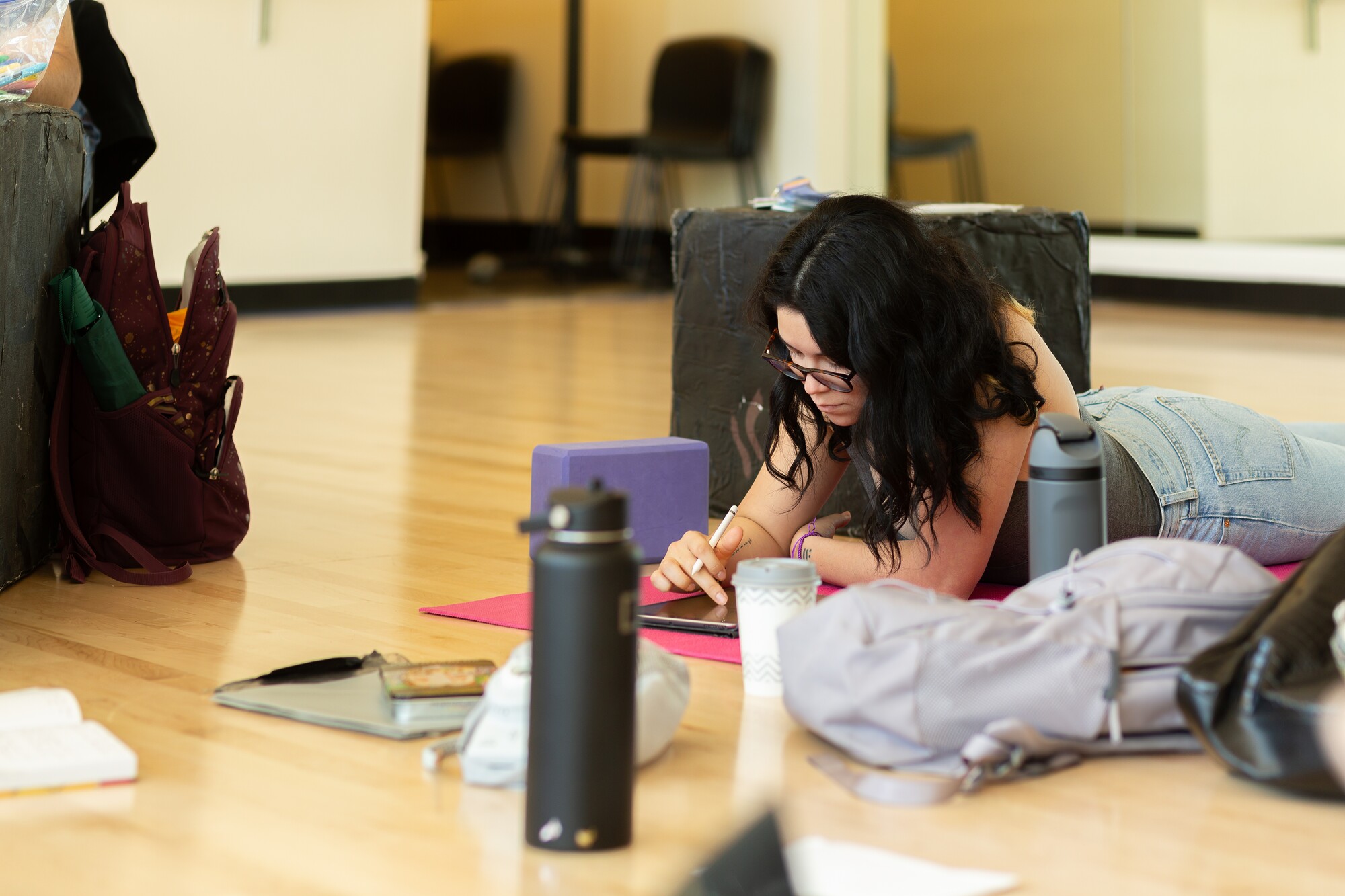
Ash Parra at the LTC Designer and Director Colaboratorio. Photo by Roy Arauz.
The third space was unplanned space—the virtual spaces made for those who had transportation delays, the spaces of Portland that served as alternate meeting locations, and interactions in the hotel where we were housed. One afternoon, I accompanied Tania Barrenechea to the farmer’s market where we ran into Colaboratorio members as we moved throughout the long stretch. It felt almost too much like a community, seeing so many people I knew while on the other side of the country on a trip I made by myself. Other groups left their spaces indoors to meet in the park or go on a field trip to the Guillermo del Toro exhibit at the Portland Art Museum, creating an engagement with Mexican artistry as a new source of common ground amongst the group. Some went for coffee and to the craft store sharing the experience of cafecito and making communal the act of shopping for color swatches. When I gathered the scholars/documentarians together for an hour, we siloed ourselves in a corner of the second-floor lounge area of the hotel during a pizza party, that intimate act of creating community within community. The assigned and alternate spaces informed how people created and collaborated, and getting away proved essential to fostering communication and inspiration.
By changing and intersecting spaces, people implemented the idea of being a creative team in different environments. This fostered conversations about a range of issues; theatremakers rarely ever get to do that in small spaces with a level of trust built in, a frame of community, and permission to not have to produce. One of the event co-champions, Tara Houston, asked, “What happens when artists curate spaces for artists? They create spaces for healing and space for a voice.”
This is an alternate story of what happened in the American theatre over the summer of 2023.
Laying the Groundwork for Process to Change
What resulted was a sharing of stories that were then integrated into the design for the play. Daphnie Sicre noted that designers often do not know each other, and her group aimed to create “not just a safe space but a brave space.” One group came to the meeting more as colleagues with an end goal. Another emphasized the importance of time for oneself, as Azaria Jade Rubio noted, especially when talking about trauma. The group she was part of would form a group huddle, then work silently but in the same room, a reminder that individual work is not antithetical to collaboration.
LTC convenings and working with Latinx people creates a space for bilingualism and multiculturalism to grow. Jokes were told in English and Spanish, and some groups switched languages throughout the convening. The issue of Spanish as a purity test for Latinx identity arose; Sonia Alvarez expressed her desire to work in Mexico, but she feels that her Spanish would need to improve to do so. Blanca Forzán brought forward a double entendre within the script: when the character Louise references going to “El Torito for taco Tuesdays” and says it “isn’t real Mexican food,” the US American members of her group and I all read this dialogue with the chain restaurant in mind. Forzán pointed out that “el torito” means “jail” in Mexico, and it is slang for when a person passes out from being drunk and ends up in jail. It was a clear reminder that even for those of us who are Latinx and bilingual, the audiences for Latinx plays will understand and interpret phrases and language based on their own cultural terms.

Anthony Almendarez and Alex Vásquez Dheming at the LTC Designer and Director Colaboratorio. Photo by Roy Arauz.
What the Colaboratorio illuminated is that play—a necessary component of collaboration—is more important than ever. The false premise of a weekend to focus on process without the obligation to solidify a plan for a show indeed brought us to this reality. It generated possibilities we cannot imagine within the constraints of our production-oriented realities. The LEGO exercise at the outset became a metaphor for the weekend. It was a reminder to play and to know that there is still a contribution even if you simply take something apart and then rebuild. Being in the room with good collaborators produced an amazing return, and as Alejandro Melendez noted, the spaces of the Colaboratorio became places that you can trust with your work, your art, and your heart. Ash Parra summarized the experience succinctly when they stated that their group always started with “what if?”
This is an alternate story of what happened in the American theatre over the summer of 2023. Process generally doesn’t make headlines, and in the prolonged epidemic experience of racism, economic distress, and COVID-19, we were tired and on edge.
A number of suggestions for possible and ideal working conditions emerged from the weekend, which no doubt the essays from the other scholars will address. In 2042, the Global Majority will become the majority in the United States. Tlaloc Rivas reminded the group that Luis Valdez, whose work is credited as the foundation for modern and contemporary Chicano theatre, considers his work to be “New American” theatre. None of us was sure that Latinidad will be what unites us in the future, but it is what brought us together this summer to create, to collaborate, and to play, as it does again and again.

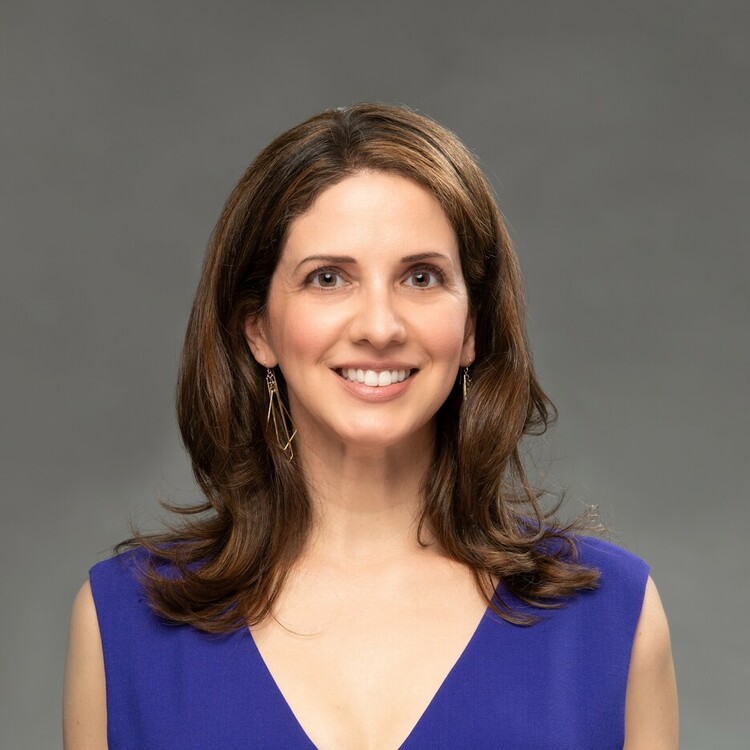
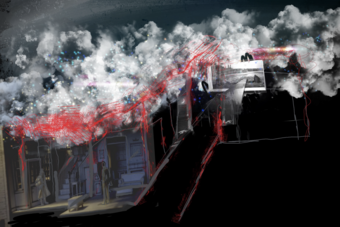


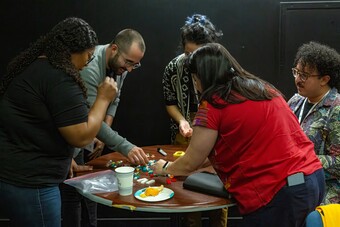

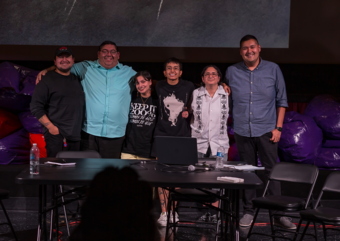

Comments
The article is just the start of the conversation—we want to know what you think about this subject, too! HowlRound is a space for knowledge-sharing, and we welcome spirited, thoughtful, and on-topic dialogue. Find our full comments policy here